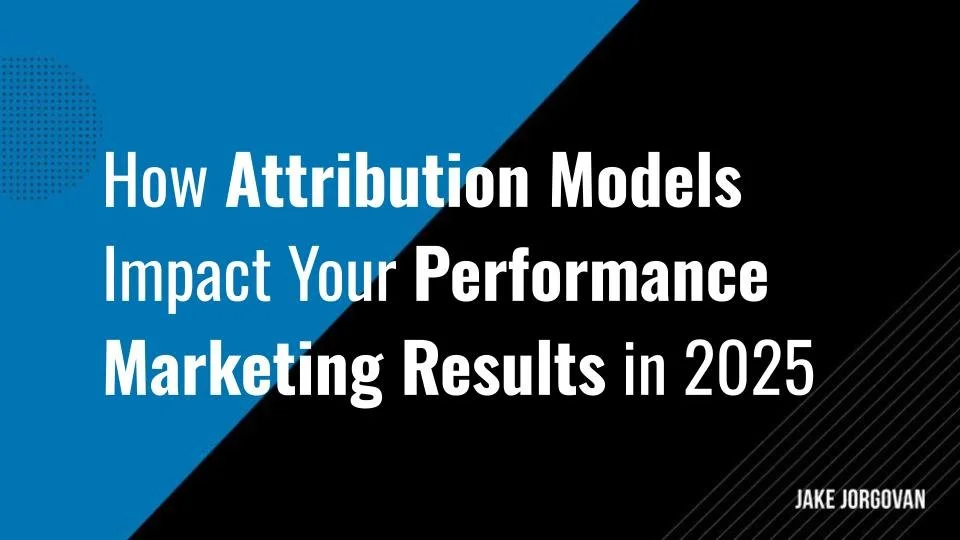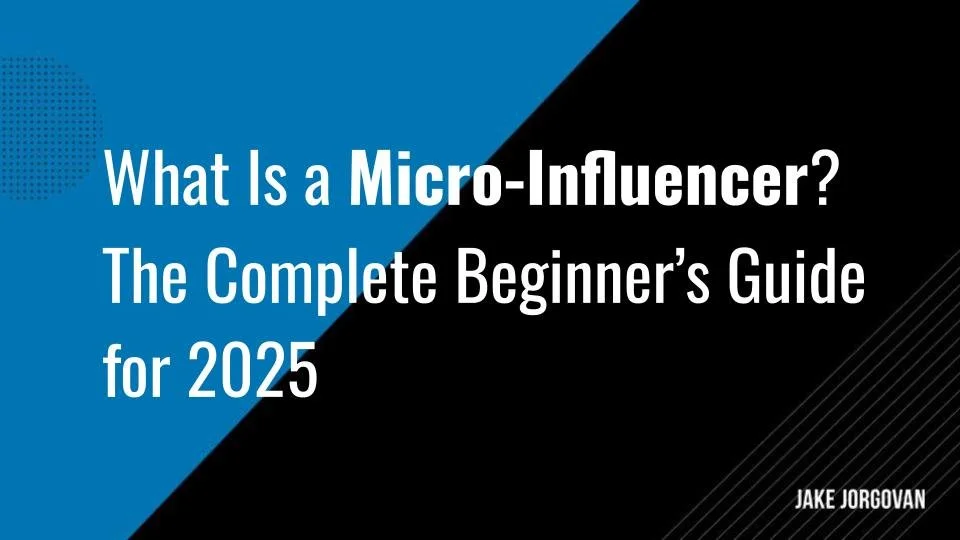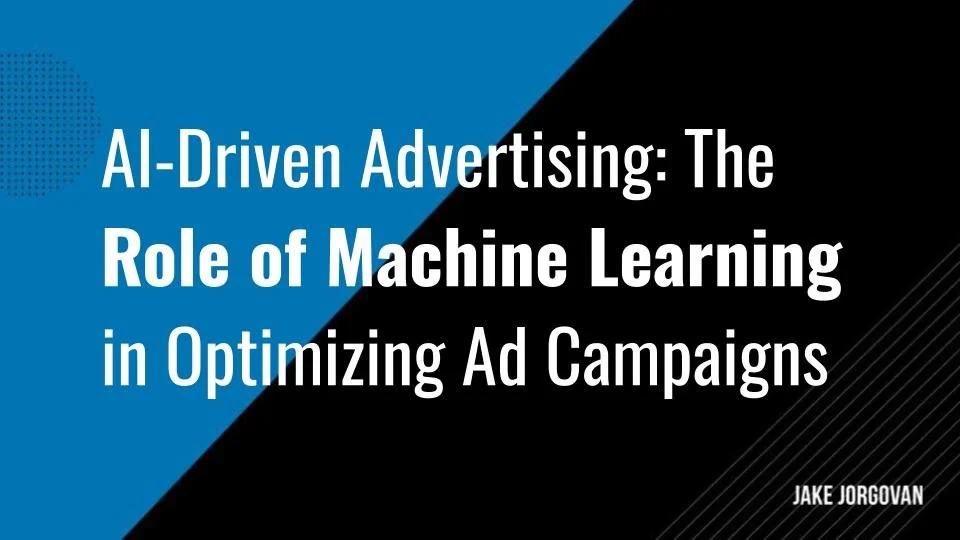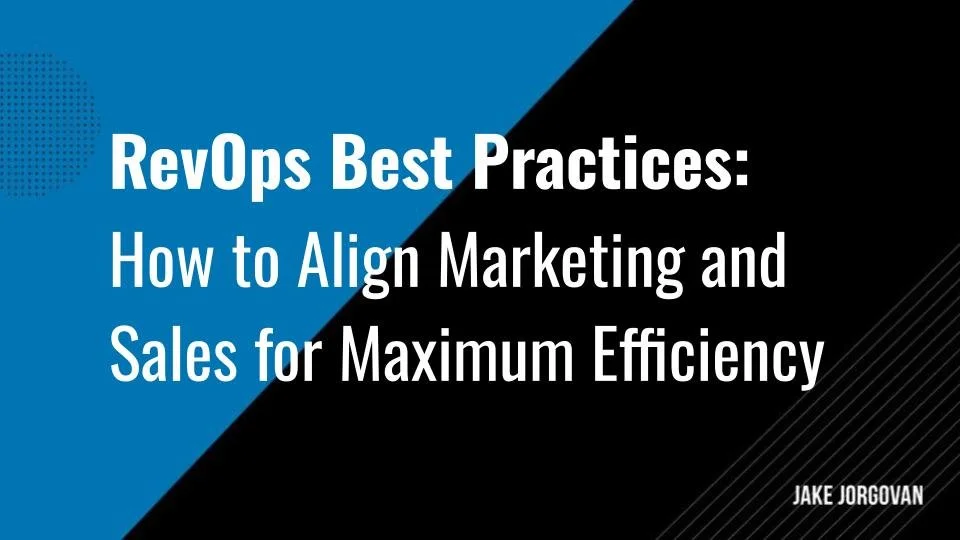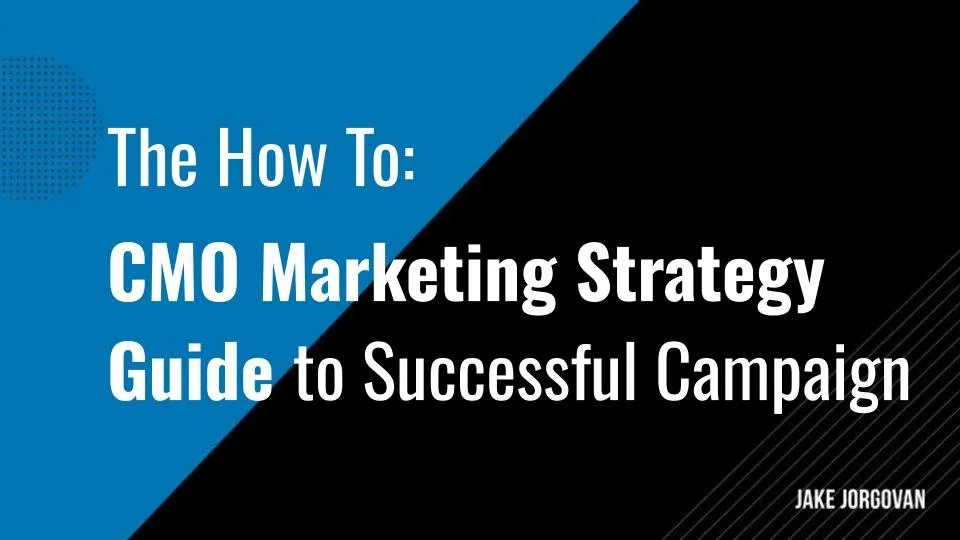How Attribution Models Impact Your Performance Marketing Results in 2025
Performance marketing is a results-driven advertising strategy. That’s why, in many cases, performance advertisers prefer to pay only when specific actions like clicks or conversions happen.
They focus more on sales than on awareness.
For them, it's all about the results.
In 2024, 80% of marketers put some of their ad budgets into search, social, display, and remarketing ads.
But here's the kicker: the success of these efforts really depends on picking the right way to track and credit sales or conversions.
If you can't measure the impact of each ad or campaign properly, doubling down on what's actually working is pretty tough.
This article will explore how choosing the right attribution model can make or break your marketing strategy.
Let’s dive in.
P.S. To further enhance your performance marketing strategy, explore our comprehensive guide on the top 37 performance marketing agencies. This article will help you identify the right partners to maximize your marketing ROI.
What Are Marketing Attribution Models?
Marketing attribution tracks which efforts drive customer conversions, showing what works and what doesn’t.
In the 1950s, marketers used sales data to analyze the impact of different channels – this became marketing mix modeling.
As digital marketing grew, simple models like first-touch and last-touch attribution emerged, giving all sales credit to just one touchpoint before conversion (the first or the last).
But they ignored the bigger picture.
Multi-touch attribution changed that, helping marketers understand how multiple touchpoints contribute to their results. By 2024, 76% of marketers relied on digital attribution to fine-tune their strategies.
"Marketing attribution is the process of determining which interactions influence a customer to purchase from your brand – it lets you know what route a customer took to your products." - Adobe Experience Cloud
Knowing how attribution evolved helps you measure marketing impact more accurately and make smarter decisions
Why Are Marketing Attribution Models Important?
Let's summarize why marketing attribution models matter:
Enhance marketing performance: Attribution models let you identify high-performing channels. Double down on them to obtain a better ROI. In fact, companies using advanced attribution achieve a 26% higher ROI on marketing spend.
Gain customer insights: They reveal audience preferences. Use them to build more effective marketing strategies.
Optimize marketing budget: If you know what strategies work, you can simply reuse them and give up those that don’t produce results. This way, you can achieve better outcomes with less money.
Increase conversions: Multi-touch attribution can boost conversions by up to 30%.
Overcome marketing challenges: 75% of marketers cite a lack of attribution modeling as a barrier to achieving goals.
Types of Attribution Models
Let's break down the different types of attribution models and how they work:
Last-Click Attribution
Last-click attribution gives all the credit to the last ad or interaction a customer had before they bought something.
It's straightforward and shows which channels are sealing the deal.
But, it misses the big picture by ignoring everything that led up to that final decision, which might give you a skewed view of what's actually working.
Example:
Let's consider a customer who first discovers your product through a social media ad, then receives an email newsletter, and finally clicks on a Google Ads link to make a purchase. In last-click attribution, the Google Ads link receives all the credit for the conversion, disregarding the previous touchpoints.
First-Click Attribution
First-click attribution gives all the credit for a conversion to the first marketing touchpoint that a customer encounters with your brand.
It's a simple way to see which channels are good at getting people's attention.
However, it misses the impact of later interactions, which can leave you with a partial picture of how customers really come to make a purchase.
“First click attribution is akin to giving my first girlfriend 100% of the credit for me marrying my wife.” - Avinash Kaushik, author of the best-selling books Analytics 2.0 and Web Analytics
Example:
Let's say a customer first encounters your brand through an organic search, then clicks on a social media post, and finally receives an email before making a purchase. In first-click attribution, the organic search receives all the credit for the conversion, highlighting its role in initiating the customer journey.
Linear Attribution
Linear attribution gives equal credit to every marketing touchpoint. It shows all interactions, which helps with budget decisions.
But it ignores that some touchpoints matter more than others, making the customer journey look simpler than it is.
Example:
Let's say a customer first clicks on a Google ad, then opens an email campaign, engages with a social media post, and finally visits your website to make a purchase. In a linear attribution model, each of these four touchpoints receives 25% credit for the conversion, acknowledging the role of each interaction
Position-Based (U-Shaped) Attribution
Position-based attribution, or the U-shaped model, gives 40% of the credit for a conversion to the first and last interactions a customer has with a brand, spreading the remaining 20% across any other touchpoints.
This method highlights the roles of the initial and final engagements.
Yet, it might downplay the importance of the interactions in between, simplifying the customer's journey a bit too much.
Example:
Let's consider a customer who first discovers your product through a Facebook ad, then reads a blog post, subscribes to your newsletter, and finally makes a purchase after clicking a promotional email. In a position-based attribution model, 40% of the credit is assigned to the Facebook ad (initial interaction), 40% to the promotional email (final interaction), and the remaining 20% is divided equally between the blog post and newsletter subscription (middle interactions).
Time-Decay Attribution
Time-decay attribution gives more credit to the marketing steps closer to when a sale happens.
This method highlights the latest interactions, helping you fine-tune your marketing efforts.
However, it might overlook the earlier steps that first grabbed the customer's attention. That’s why it works best for sales cycles shorter than 24 hours.
Example:
Let's consider a customer who first clicks on a display ad two weeks before purchasing, then engages with a social media post one week prior, and finally clicks an email link the day before buying. In a time-decay attribution model, the email link receives the most credit, the social media post less, and the display ad the least, reflecting their temporal proximity to the conversion.
Data-Driven Attribution
Data-driven attribution uses machine learning to figure out which parts of your marketing really lead to sales.
It gives you a clearer picture of what’s working in your customer's journey, so you can make smarter choices and improve your marketing.
But, keep in mind, it needs a lot of data and can be tricky to set up.
Example:
Let's imagine a customer journey where a shopper engages with a series of ads across different platforms – starting with an Instagram ad, followed by a YouTube video, and finally an email campaign before making a purchase. In a data-driven attribution model, advanced algorithms analyze all these touchpoints to determine which had the most significant impact on the decision to buy, assigning credit accordingly, instead of just guessing or evenly distributing it.
How to Implement Attribution Models Effectively
Let's dive into a step-by-step approach for implementing attribution models:
Choose the Right Model for Your Business
Start by taking a close look at your industry and how long it usually takes to close a sale. For example, if you're in e-commerce and sales happen fast, a straightforward model like last-touch attribution might do the trick. But if your sales process takes longer, you might need a more complex approach, like multi-touch attribution.
Next, dig into how your customers behave. Track their typical path to purchase and pinpoint the main moments they interact with your brand. Understanding this will help you pick an attribution model that truly captures how your customers decide to buy.
Lastly, check out the data you've got. If you're thinking about using a data-driven attribution model, make sure you have enough quality data and the right tools to handle it. These models need a lot of info and some pretty hefty analytics to work well.
Integrate Data Sources and Tools
Integrate data from various marketing platforms using tools like Google Analytics 4 and Adobe Analytics. These tools help track customer activities across different platforms.
For example, Google Analytics 4 allows you to see which marketing activities drive sales by examining customer behavior across various channels.
Similarly, Adobe Analytics lets you tweak how you credit different marketing touchpoints with its customizable Attribution IQ feature.
This way, you get a clearer picture of what’s working and what’s not.
Test, Iterate, and Refine Attribution Strategies
To get a clear picture of what’s working and what’s not in your marketing efforts, begin by setting up basic performance measures with your preferred way of tracking.
Next, run some tests. Split your audience into control and test groups to really see the effect of different channels or campaigns. Keep an eye on important numbers like conversion rates, how much you're spending to get new customers, your returns on investment, and the long-term value of customers.
Pinpoint where you're not doing great and tweak your approach. Keep your tracking methods up to date to stay on top of your game with fresh, accurate data.
Overcome Common Challenges in Attribution Modelling
Data silos, tracking users across different devices, and privacy worries can all mess up how well companies figure out where their sales come from.
Here's the scoop: data silos scatter customer info, making it tough to see the full picture. Tracking from one device to another often misses the mark, failing to connect the dots between user activities. Plus, privacy rules like the GDPR put a tight leash on collecting and sharing data.
To get around these issues, companies should merge their data sources to break down silos, use smarter matching methods to track across devices, and find ways to track data that respect privacy laws.
Attribution Modelling Examples
To demonstrate how these attribution models function in real-world scenarios, let’s explore practical examples that showcase their influence on marketing strategies and decision-making:
E-commerce Business (First-Click Attribution)
An online furniture retailer uses first-click attribution to measure how product discovery happens. If blog content about interior design trends generates the most initial visits, the retailer shifts its content strategy to double down on similar articles. This ensures more potential buyers enter the sales funnel at the awareness stage.
Why it works: First-click attribution is useful for identifying top-of-funnel strategies that drive initial engagement. It helps brands optimize for discovery and brand awareness, ensuring they capture more early-stage leads.
Where it may fail: While first-click attribution highlights what brings users in, it ignores the later touchpoints that ultimately drive conversions. In industries where customers research multiple options over time (e.g., high-ticket furniture purchases), this model may overvalue awareness efforts and undervalue remarketing, cart recovery, or sales-driven touchpoints.
SaaS Company (Last-Click Attribution)
A project management software company tracks last-click attribution to determine which acquisition channels drive direct sign-ups. If paid search ads with keywords like “best task management tool” convert the most trial users, the company allocates more budget to these ads. This optimization tactic lowers cost per acquisition and increases ROI.
Why it works: SaaS businesses often rely on trial sign-ups as a key conversion metric, and last-click attribution helps pinpoint the channels that directly lead to those sign-ups. It’s particularly useful in performance marketing where budgets need to be allocated to the most immediate revenue-driving sources.
Where it may fail: This model ignores all previous interactions that nurtured the lead. A potential customer might have engaged with educational content, email marketing, or webinars before signing up. If the company invests solely in last-click sources (e.g., paid search), it risks underfunding the channels that generate demand and warm up leads before conversion.
B2B Lead Generation (Linear Attribution)
A cybersecurity firm assigns equal credit to all touchpoints using linear attribution. If a lead engages with a LinkedIn ad, downloads a whitepaper, and later books a demo after an email follow-up, each interaction gets recognition. The firm then strengthens all three channels instead of over-prioritizing just one.
Why it works: B2B sales cycles are longer and involve multiple decision-makers. By distributing credit evenly, linear attribution ensures that all touchpoints are valued, preventing an overemphasis on the final conversion action while ignoring the nurturing process.
Where it may fail: Not all touchpoints contribute equally to conversion. A LinkedIn ad may have had little influence compared to a highly persuasive webinar. By treating all touchpoints the same, linear attribution can lead to inefficient budget allocation, as it doesn't distinguish between high-impact and low-impact interactions.
Subscription Business (Time Decay Attribution)
A streaming service uses time decay attribution to weigh recent interactions more heavily. If users engage with multiple ads but convert after receiving a limited-time discount via email, the brand increases investment in retargeting emails to accelerate conversions.
Why it works: In a subscription business, customers often need multiple nudges before subscribing. Time decay attribution ensures that the last interactions (like retargeting emails or special offers) receive more credit, helping the company refine its final push towards conversion.
Where it may fail: While recent interactions play a critical role in closing a deal, earlier touchpoints (e.g., brand awareness campaigns, influencer marketing, or social proof) may have been the real drivers of interest. Over-prioritizing last-stage interactions could lead to an excessive focus on discounts and remarketing while undervaluing brand-building efforts.
Omnichannel Retailer (Data-Driven Attribution)
Walks of Italy, a Rome-based walking tour company, needed to maximize bookings for its peak summer season. Traditionally relying on last-click attribution, they found that 34% of conversions involved multiple touchpoints, undervaluing generic search campaigns. To optimize ad spend, their agency, Merkle | Periscopix, implemented a data-driven attribution (DDA) model in Google Search Ads 360. This machine-learning approach revealed the true impact of earlier search queries on final bookings.
With these insights, the company adjusted its bidding strategy to prioritize high-volume, generic keywords. The results were significant: a 33% year-over-year revenue increase, a 69% rise in ticket sales, and a 25% boost in ROI. The success of DDA and automated bidding led Walks of Italy to continue refining its approach for future campaigns.
How to Choose the Right Attribution Model for Smarter Performance Marketing
Pick the right attribution model, and your performance marketing gets sharper. Each channel and touchpoint matters, so choose a model that fits your goals. A multi-touch approach gives you the full picture – from first contact to conversion.
Reevaluate often. Moving from basic models like first-touch or last-click to position-based or data-driven ones helps you see what’s actually driving results. That means better decisions, better spending, and better outcomes.
Keep tweaking. The more you refine your attribution, the better you measure impact. That’s how you make marketing work smarter.
P.S. Want to maximize your marketing impact with high-performing creative? Check out our Top 26 Performance Creative Agencies to find the right partner for your brand.
Frequently Asked Question
What is the attribution model of performance marketing?
An attribution model in performance marketing assigns conversion credit to marketing activities that influence a customer’s buying decision. Traditional attribution models like last-click and first-click attribution give all credit to one touchpoint before conversion. Multi-touch models, including position-based and linear attribution, distribute credit across customer interactions. Advanced tools like Google Analytics 4 and Adobe Analytics use data-driven attribution models to analyze the actual impact, helping teams refine marketing mix modeling for better marketing performance.
How can attribution modeling help you?
Attribution modeling helps you optimize your marketing budget by identifying high-performing channels. You also get deeper insights into customer behavior, revealing which marketing touchpoints drive conversions. With advanced analytics and first-party measurement solutions, you gain a complete picture of your marketing funnel, enabling data-driven decisions. Leverage all this knowledge to improve your campaign performance. This leads to shorter sales cycles and better marketing ROI.
What is attribution in performance advertising?
Attribution in performance advertising measures which individual touchpoints contribute to conversions. It helps marketers track customer journey maps, evaluating earlier interactions, middle touchpoints, and the final conversion event. Attribution models provide real-time insights, ensuring better campaign optimization. Some even integrate artificial intelligence and predictive analytics.
What is the best marketing attribution model?
There’s no universal best attribution model. The right choice depends on sales cycles, marketing goals, and data availability. Data-driven models offer accurate measurement by analyzing influential interactions. Multi-touch attribution models, like time-decay and position-based attribution, provide a clearer picture of high-performing channels.
How does attribution modeling impact future marketing strategies?
Attribution modeling shapes future marketing strategies by providing actionable insights into customer interactions. With advanced analytics and first-party data, marketing intelligence platforms analyze influential touchpoints. This lets you make smarter decisions, optimizing marketing tactics and platform analytics for a more accurate representation of channel performance. The ultimate result is a better long-term marketing ROI.














